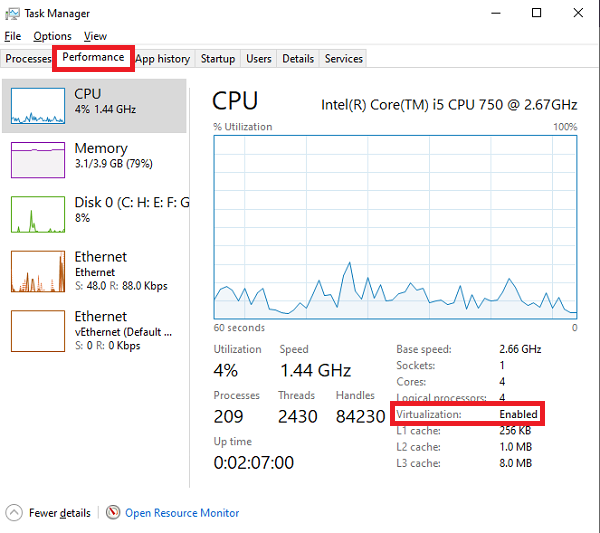

- #Intel s vt x and amd s amd v are examples o how to
- #Intel s vt x and amd s amd v are examples o mac os x
- #Intel s vt x and amd s amd v are examples o install
- #Intel s vt x and amd s amd v are examples o software
- #Intel s vt x and amd s amd v are examples o free
#Intel s vt x and amd s amd v are examples o how to
Read the VirtualBox manual to learn how to control it and how it interacts with your mouse and keyboard. The wx appliance can be started and shut down much like a physical computer.
#Intel s vt x and amd s amd v are examples o free
(If you know what you are doing, feel free to fiddle with other settings, of course.) Startup and Shutdown
Click Import to accept the default machine parameters. Check the box for Reinitialize the MAC address of all network cards. Click the folder icon and browse to select wx.ova, then click Continue. Once wx.ova has finished downloading, start VirtualBox and choose the menu item File > Import Appliance…. #Intel s vt x and amd s amd v are examples o install
While you are waiting, download and install the latest version of VirtualBox 5.Do it on the campus network.Īlternatively, use scp to get the file if you have a CS account and scp installed (allows access from anywhere, not just campus): (Or be a scientist and experiment: just try it!) Installationĭownload wx.ova to your computer. 15GB of free disk space (to be comfortable 10GB probably enough, maybe even less)Īsk if you are not sure if your machine will work.

#Intel s vt x and amd s amd v are examples o mac os x
Mac OS X 10.8 or later, Windows Vista SP1 or later, or any recent major distribution of GNU/Linux and. a fairly recent 64-bit Intel or AMD processor. Most computers from the last 5 years or so should suffice. #Intel s vt x and amd s amd v are examples o software
Replacing the software part of your appliance from scratch without losing your personal files. Accessing your CS department account (“tempest”) files directly on the wx appliance file system. If you add, commit, and push often, your important work is already backed up!Įventually (but not yet) we plan to support: Luckily, this is pretty easy if you are using version control to manage your work as we do in CS 240 and CS 251. That means you should backup anything of importance stored on your appliance. If your wx appliance stops working, you can replace it easily with a new one, but you will lose all the files you stored on the old one. There is currently no support for “repair” as part of the warranty on wx appliances. Your assistance in finding and debugging these surprises is appreciated. Things should work, but expect to find an occasional surprise. Infrastructure described in this document is currently experimental and in its first semester of deployment. 
Topics like these might just spur you to further study of computer systems.
Learning about virtual machines is a useful skill, as more and more computing infrastructure becomes virtualized. (GNU/Linux operating systems power a huge swath of the internet.) You have a GNU/Linux environment available on your laptop any time you want to tinker with it for other projects. Your work is isolated from the rest of your computer – no worries about messing up other software you have installed while trying to install software for this course. Your only further configuration steps (see below) will be to change the password, optionally create a new account for yourself, and tell Mercurial your name and SSH key. One installation gets you all the course tools. The wx appliance is ready to run out of the box. Regardless of whether you work on a CS machine, working in the microfocus or S173 labs is great for class camaraderie! (And you might even get some great tips from peers.) Benefits spotty network connections that cripple remote logins to CS machines. worrying about tricky low-level compilation differences between your computer and our grading computers or. installing and configuring the various tools for this course. Use the wx appliance if you want the flexibility of working on your own computer but you want to avoid: You can run the appliance as an application alongside others on your own computer with minimal fuss. 
The performance drop is due to the virtualization overhead of running the system as a guest.The wx appliance is a virtual machine that provides all the software tools for CS 240 and CS 251. When installing Hyper-V if the SVM feature is detected then the whole Windows host OS is executed as a privileged guest. I haven't done any other benchmarks, but if overall we get a host performance penalty just by enabling the virtualization features, then this sucks big time.Įdit: This is not a problem of AMD's SVM but rather the architecture of Hyper-V. When overclocking and locking all cores to 4425 MHz:Ĭan somebody also confirm this behavior? I made sure that the Hyper-V services are disabled (on both settings), and obviously I am not using any VMs (I have none configured) while running these tests. I've been doing some performance tests on my new Ryzen 3900X and I noticed that when SVM is disabled in the BIOS, Cinebench R20 results in higher scores overall, compared to runs where SVM is enabled.įor example, on stock BIOS settings (SVM disabled is the default setting):








 0 kommentar(er)
0 kommentar(er)
